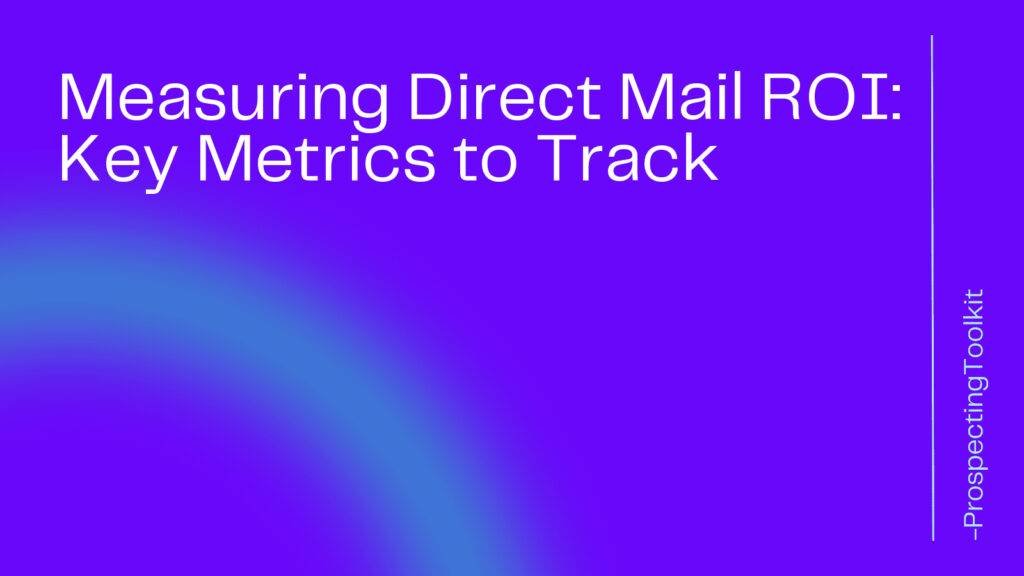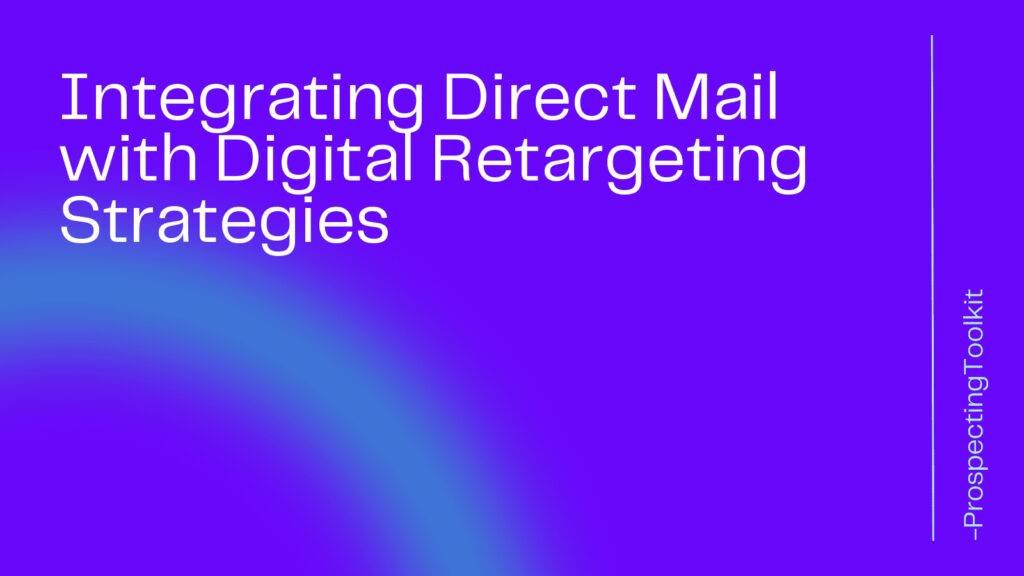Growing your industrial B2B (Business-to-Business) business requires a strategic approach.
With the right tactics and a solid marketing plan, you can expand your customer base, increase revenue, and establish a strong presence in your industry.
This comprehensive guide will provide you with valuable insights and actionable strategies to help you achieve sustainable growth for your industrial B2B business.
Table of Contents
Toggle1. Understanding the Industrial B2B Landscape
Before diving into growth strategies, it’s crucial to have a clear understanding of the industrial B2B landscape. Industrial B2B refers to businesses that sell products or services to other businesses rather than directly to consumers. This sector includes manufacturing, distribution, wholesale, and other industries that cater to the needs of businesses.
To effectively grow your industrial B2B business, you need to identify your target market, understand their pain points, and position your offerings as solutions to their challenges. Conduct market research, analyze industry trends, and study your competitors to gain a competitive advantage.
2. Building a Strong Online Presence
In today’s digital age, having a strong online presence is essential for any business. Here are some strategies to establish and enhance your online presence:
a. Website Optimization
Optimize your website for search engines by incorporating relevant keywords, meta tags, and high-quality content. Ensure your website is user-friendly, mobile-responsive, and loads quickly. Create engaging landing pages that highlight your products or services and include clear calls-to-action.
b. Content Marketing
Create valuable and informative content that addresses the pain points of your target audience. Publish blog posts, articles, and whitepapers that showcase your expertise and establish your business as a thought leader in the industry. Share your content on social media platforms and engage with your audience to build brand awareness and credibility.
c. Social Media Marketing
Leverage social media platforms to connect with your target audience, share industry news and updates, and promote your products or services. Create compelling social media profiles, post regularly, and engage with your followers to build a loyal community.
d. Email Marketing
Build an email list of potential customers and existing clients. Send targeted email campaigns to nurture leads, promote new products or services, and provide valuable insights. Personalize your emails and segment your audience to deliver relevant content that resonates with their needs.
3. Developing a Targeted Marketing Strategy
To effectively grow your industrial B2B business, you need a targeted marketing strategy. Here are some key elements to consider:
a. Define Your Target Audience
Identify your ideal customer profile based on industry, company size, location, and other relevant factors. Understand their pain points, challenges, and motivations to tailor your marketing messages accordingly.
b. Set Clear Marketing Goals
Establish specific, measurable, attainable, relevant, and time-bound (SMART) goals for your marketing efforts. Whether it’s increasing website traffic, generating leads, or improving customer retention, having clear goals will guide your marketing strategy.
c. Choose the Right Marketing Channels
Select the most effective marketing channels to reach your target audience. This may include search engine optimization (SEO), pay-per-click (PPC) advertising, social media marketing, content marketing, email marketing, trade shows, and industry events.
d. Monitor and Adjust
Regularly monitor your marketing campaigns and analyze the results. Identify what’s working and what’s not, and make necessary adjustments to optimize your marketing efforts. Use analytics tools to track website traffic, conversion rates, and other key metrics.
4. Expanding Your Customer Base
Expanding your customer base is crucial for sustainable growth. Here are some strategies to attract new customers:
a. Targeted Advertising
Utilize targeted advertising campaigns to reach potential customers who fit your ideal customer profile. This can include online advertising platforms like Google Ads, social media ads, and industry-specific publications.
b. Referral Programs
Implement a referral program to incentivize your existing customers to refer new clients. Offer rewards or discounts for successful referrals, and ensure a seamless onboarding process for new customers.
c. Strategic Partnerships
Form strategic partnerships with complementary businesses in your industry. Collaborate on joint marketing initiatives, cross-promote each other’s products or services, and leverage each other’s customer base to expand your reach.
d. Attend Trade Shows and Industry Events
Participate in trade shows and industry events to showcase your products or services. Network with potential customers,industry professionals, and key decision-makers. Use these opportunities to generate leads, build relationships, and increase brand visibility.
e. Cold Email Outreach
Cold email outreach involves reaching out to potential clients or business partners via email, even if you have no prior relationship with them. Here are some tips to make your cold email outreach successful:
- Personalization: Take the time to research and personalize each email. Address the recipient by their name, mention something specific about their company or industry, and explain why you believe your product or service would be beneficial to them.
- Clear and Concise: Keep your email clear, concise, and to the point. Avoid lengthy paragraphs and unnecessary jargon. Clearly state the purpose of your email and how your offering can solve their pain points.
- Compelling Subject Line: Craft a subject line that grabs attention and entices the recipient to open your email. Use personalized subject lines that mention their company or industry to increase the chances of engagement.
- Value Proposition: Clearly communicate the value proposition of your product or service. Explain how it can solve a specific problem or improve their business operations. Focus on the benefits rather than just the features.
- Call-to-Action: Include a clear call-to-action in your email. Whether it’s scheduling a call, requesting a demo, or asking for a meeting, make it easy for the recipient to take the next step. Provide contact information and any necessary links.
- Follow-up: Don’t be discouraged if you don’t receive an immediate response. Follow up with a polite and friendly reminder after a few days. Persistence can often lead to positive results.
Remember to always comply with email marketing regulations, such as including an unsubscribe option and respecting privacy laws.
f. LinkedIn
LinkedIn is a professional networking platform that allows you to connect with industry professionals, potential clients, and business partners. Here’s how you can leverage LinkedIn for the growth of your industrial B2B business:
- Optimize Your Profile: Ensure that your LinkedIn profile is complete, professional, and showcases your expertise. Use relevant keywords in your headline, summary, and experience sections to improve your visibility in search results.
- Expand Your Network: Connect with individuals who are relevant to your industry or target market. Send personalized connection requests that explain why you’d like to connect and how you can provide value to them.
- Engage with Content: Regularly engage with relevant content on LinkedIn. Like, comment, and share posts from industry influencers, potential clients, or partners. This helps you build relationships and establish yourself as a knowledgeable professional.
- Share Valuable Content: Create and share valuable content on LinkedIn that addresses the pain points of your target audience. This can include articles, industry insights, case studies, or thought leadership pieces. Use relevant hashtags to increase visibility.
- Join and Participate in Groups: Join industry-specific LinkedIn groups where your target audience is likely to be active. Engage in discussions, share insights, and provide value to group members. This can help you expand your network and generate leads.
- Utilize LinkedIn Sales Navigator: Consider using LinkedIn Sales Navigator, a premium tool that provides advanced search filters, lead recommendations, and personalized outreach features. It can help you identify and connect with potential clients more effectively.
- Personalized Outreach: When reaching out to potential clients on LinkedIn, personalize your messages. Mention something specific about their profile or recent activity to show that you’ve done your research. Clearly explain why you believe your offering would be valuable to them. You can use ProspectingToolkit to get email addresses and reach out.
Remember to always maintain a professional and respectful tone on LinkedIn. Avoid spamming or being overly promotional.
By effectively utilizing cold email outreach and LinkedIn, you can expand your network, generate leads, and foster valuable business relationships for the growth of your industrial B2B business.
5. Enhancing Customer Experience
Providing an exceptional customer experience is vital for customer satisfaction, retention, and advocacy. Here are some strategies to enhance the customer experience:
a. Personalized Approach
Tailor your interactions and communications with customers based on their specific needs and preferences. Use customer relationship management (CRM) tools to gather and analyze customer data, allowing you to provide personalized recommendations and solutions.
b. Efficient Customer Support
Offer prompt and efficient customer support through various channels such as phone, email, and live chat. Train your support team to be knowledgeable, empathetic, and responsive to customer inquiries and issues.
c. Continuous Improvement
Regularly gather customer feedback and use it to improve your products, services, and overall customer experience. Conduct surveys, monitor online reviews, and engage in social listening to understand customer sentiment and identify areas for improvement.
d. Loyalty Programs
Implement a loyalty program to reward and incentivize repeat customers. Offer exclusive discounts, early access to new products, or special perks to encourage customer loyalty and advocacy.
6. Leveraging Technology for Growth
Technology plays a crucial role in the growth of industrial B2B businesses. Here are some ways to leverage technology for growth:
a. Marketing Automation
Utilize marketing automation tools to streamline and automate repetitive marketing tasks. This includes email marketing, lead nurturing, social media scheduling, and customer segmentation. Automation allows you to scale your marketing efforts and deliver personalized experiences at scale.
b. Customer Relationship Management (CRM)
Implement a CRM system to centralize customer data, track interactions, and manage customer relationships effectively. A CRM system helps you understand your customers better, identify upselling or cross-selling opportunities, and improve overall customer satisfaction.
c. E-commerce Platforms
If applicable to your business, consider implementing an e-commerce platform to sell your products or services online. This opens up new revenue streams, expands your reach, and provides convenience for your customers.
d. Data Analytics
Leverage data analytics tools to gain insights into customer behavior, market trends, and the effectiveness of your marketing efforts. Use these insights to make data-driven decisions, optimize your strategies, and identify new growth opportunities.
7. Measuring and Analyzing Results
To ensure the effectiveness of your growth strategies, it’s essential to measure and analyze your results. Here are some key metrics to track:
a. Website Traffic
Monitor your website traffic using tools like Google Analytics. Track the number of visitors, page views, and bounce rates to understand the effectiveness of your online marketing efforts.
b. Conversion Rates
Measure the conversion rates of your marketing campaigns. This includes tracking the number of leads generated, the percentage of leads converted into customers, and the revenue generated from each campaign.
c. Customer Lifetime Value (CLV)
Calculate the CLV to understand the long-term value of your customers. This metric helps you identify opportunities for upselling, cross-selling, and customer retention.
d. Return on Investment (ROI)
Evaluate the ROI of your marketing campaigns by comparing the cost of your marketing efforts to the revenue generated. This helps you determine the profitability and effectiveness of your marketing strategies.
Frequently Asked Questions (FAQ)
How long does it take to see results from growth strategies?
The timeline for seeing results from growth strategies can vary depending on various factors such as the industry, target market, and the specific strategies implemented. Generally, it takes time to build brand awareness, generate leads, and convert them into customers. It’s important to be patient and consistently monitor and optimize your strategies for long-term success.
What are some effective lead generation strategies for industrial B2B businesses?
Some effective lead generation strategies for industrial B2B businesses include targeted advertising, content marketing, attending trade shows, cold email, LinkedIn social selling and implementing referral programs. These strategies help you reach potential customers, showcase your expertise, and generate qualified leads.
How can I improve customer retention for my industrial B2B business?
To improve customer retention, focus on providing exceptional customer service, personalized experiences, and continuous improvement based on customer feedback. Implement loyalty programs, offer proactive support, and maintain regular communication with your customers to foster long-term relationships.
What role does content marketing play in the growth of an industrial B2B business?
Content marketing plays a crucial role in the growth of an industrial B2B business. By creating valuable and informative content, you can establish your business as a thought leader, attract and engage your target audience, and build brand credibility. Content marketing also helps improve your search engine rankings and drives organic traffic to your website.
How long does it take to see results from growth strategies?
The timeline for seeing results can vary depending on various factors, such as the competitiveness of your industry, the effectiveness of your strategies, and the resources allocated to implementation. It’s important to have a long-term perspective and continuously evaluate and adjust your strategies as needed.
How can I differentiate my industrial B2B business from competitors?
To differentiate your business, focus on providing exceptional customer service, offering unique products or services, showcasing your industry expertise, and building strong relationships with customers and partners.
What role does technology play in growing an industrial B2B business?
Technology plays a crucial role in streamlining operations, improving efficiency, and enhancing the customer experience. Embrace digital tools and platforms that can help automate processes, analyze data, and enable seamless communication with customers and partners.
Is it necessary to hire a professional marketing agency to grow my industrial B2B business?
While hiring a professional marketing agency can provide expertise and support, it’s not always necessary. With the right knowledge and resources, you can implement effective marketing strategies in-house. Consider your budget, goals, and internal capabilities before making a decision.
Conclusion
Growing your industrial B2B business requires a strategic and holistic approach.
By understanding the market, developing a strong value proposition, building an online presence, leveraging digital marketing strategies, expanding your network, enhancing customer experience, implementing effective sales and marketing strategies, and measuring performance, you can position your business for sustainable growth and success.
Stay proactive, adapt to market changes, and continuously innovate to stay ahead of the competition.







